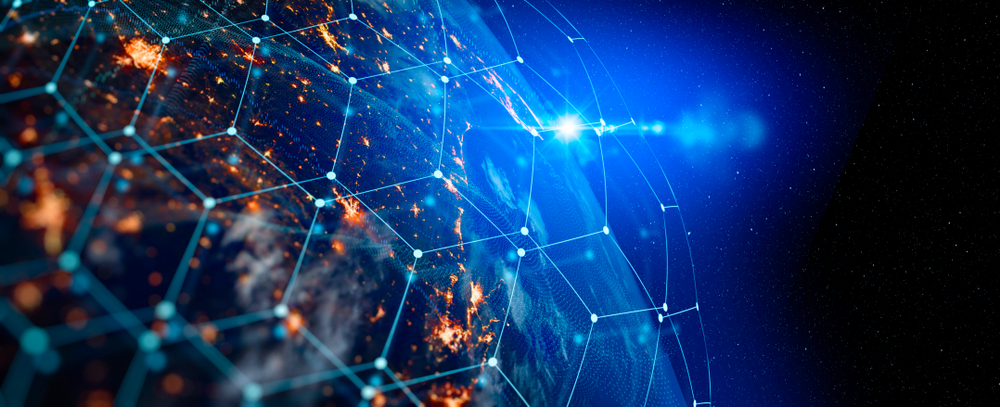Two universities’ researchers warn about solar activity that might disturb many technologies, including blockchain.
Scientists claim that the next time round, the 11-year solar cycle, which entails an increase in solar flares, sunspots, and other vast-scale activity in the expansive ball of fusion at the solar system’s core, may result in extraordinary chaos.
Despite the next peak being anticipated to be weak on an astronomical scale, it might disrupt millions of people’s daily lives. This peak is predicted to come in the first half of next year.
Scholar Warns of Hyperactive Internet
This caution comes while another research group prepares to experiment with blockchain technology’s functioning or failure in space. Peter Becker, a professor at George Mason University, told a television network that the internet developed when the sun was relatively silent and is currently entering a more active time.
Further, he said that for the first time in history, an intersection of enhanced solar activity with people’s reliance on the internet and international economic dependence on the internet has happened.
Engineers and scientists spend many hours investigating solar flares and radiation to lessen their effect on Earth and human technology. A solar flare refers to a solid confined electromagnetic radiation eruption in the Sun’s atmosphere. NOAA says that each minor space weather event can possess significant effects.
Geomagnetic Storming Failed 38 SpaceX Starlink Satellites
Following a fruitful unveiling from Cape Canaveral, Florida, in early February last year, slight geomagnetic storming resulted in 38 out of 49 SpaceX Starlink satellites failing to reach the final orbit. Instead, they burned up during the unexpected return into Earth’s atmosphere. Further, scientists had earlier forecasted the solar event correctly.
Becker disclosed to the broadcaster that if a future solar outburst is established to be moving toward Earth, humans would have ‘almost 18 hours of caution, possibly 24 hours, before the particles get to Earth and begin disrupting its magnetic fields.
Becker believes that considerable amounts of plasma or superheated matter attacking the Earth could result in electronics normally considered ‘grounded’ or secure, for instance, navigation systems, satellites, fiber optic cables, and communication equipment, being at risk. Blockchain technology is also part of the list.
Last week, the University of Villanova’s scientific testing gear hitched a SpaceX rocket to determine how space radiation would affect data and blockchain movement. The study entailed researchers beaming signals containing blockchain information from space to Earth to establish whether a radiation-exposed blockchain would destroy transactions.
Researchers Evaluating Space Weather Events
Villanova’s researchers told a media outlet that they continuously evaluate space weather and the Sun’s activities to establish whether and when it emits significant radiation. This is because it has previously deactivated or totally crippled satellites.
Hasshi Sundler, an adjunct professor at the University of Villanova, said two radiation sources are being considered, and one comes from the Sun. In the case of extremely active sun-penetrating coronal mass ejections (CMEs), massive radiation particles can be ejected at any specific instance.
A coronal mass injection refers to an enormous plasma and magnetic field expulsion from the Sun’s corona, mostly happening with solar flares, which entail strong radiation bursts. Sun’s magnetic activity Sun facilitates the two phenomena and can affect the globe’s space environment.
Sudler told a media outlet that the latest unveiling seeks to have the experiment in space for 4-5 years. This offers them a prolonged runway for various investigations concerning the dynamics and veracity of the networks and radiation-caused faults.
Further, Sudler clarified that the study would entail sending a satellite via the Van Allen belt, causing saturation with radiation. He also mentioned that the idea entails seeing whether radiation results in the blockchain ‘flipping bits’ or evoking flawed blockchain information to be transferred from the blockchain node to the network due to radiation contact.
Sudler said that they have charged particles when one has enormous coronal mass ejections. The circuits are confused momentarily after the small charges hit the satellite’s electronics. The situation entails getting into some kind of memory state that involves altering how the software’s memory is held.
Sudler added that the event could have the node assertion that one is a zero or vice versa. He mentioned how lucky people are to have the Van Allen belt and an Earth with an atmosphere. The two safeguard people from charged particles, hence eliminating worry.
Despite the Villanova test focusing on beaming blockchain information back to Earth, Sudler is confident the study could result in blockchains being sent to the moon and further.
Besides, he said that after having a well-developed network around the Earth, one can extend its distance provided the distant satellite possesses an additional satellite to communicate with.
Sudler also claimed that latency comes into consideration. However, if one slowly begins expanding the workout from the Earth to the moon, they are considering projects and systems where a blockchain node can be sent to the moon.
